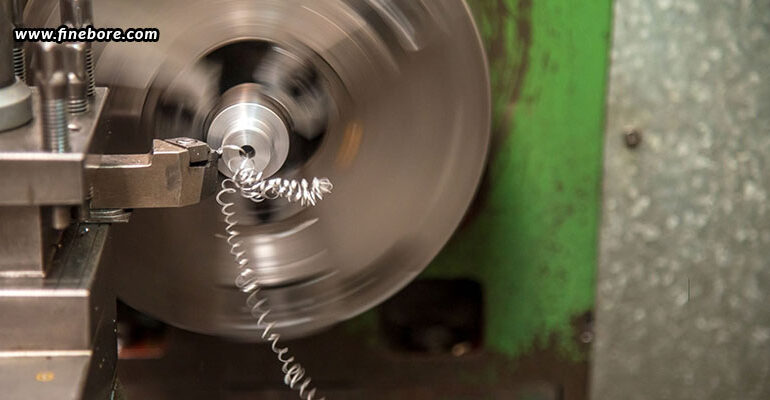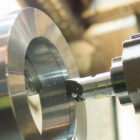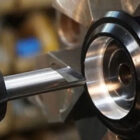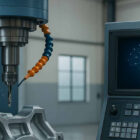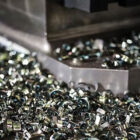While boring operations are necessary for machining, they have a unique set of problems that might impair the process’s accuracy and effectiveness. Chatter, tool deflection, and surface finish issues are some of the most frequent difficulties encountered when working with boring bars. These problems can be caused by a number of things like average materials used, incorrect dimensions selected, instability in the setup, or issues with the depth of cut and speed exercised. Let’s examine each of these in more detail and discover how these problems can be addressed with the appropriate approaches.
Chatter – Unwanted vibrations
Chatter, the unwanted vibrations during boring, can result in a low-quality surface finish, shortened tool life, and tool wear. To deal with this issue, it is crucial to check for the right dimensions, tool alignment, depth, and speed, while also adding some anti-vibration coatings if required.
- Employing the best combination of spindle speed, feed rate, and cut depth can reduce chatter. You may try out different configurations, while keeping an eye on performance to ensure the right arrangement.
- It is crucial to ensure that the tool and workpiece arrangement are stable and rigid. The workpieces should be securely fastened, and for longer workpieces, tailstocks or other extra support instruments may be needed.
- Another enhancing approach is to invest in vibration-dampening boring bars, which have coatings or anti-vibration systems to reduce or eliminate chatter and enable smoother machining.
Tool deflection – Off-track dimensions
Tool deflection, also known as bending, can cause errors in accuracy and lead to variations from the intended dimensions. To offset deflection of the tool, the right dimensions and materials need to be used.
- The boring bars used should be short and stiff, as such bars are less likely to bend during the cutting process, thus reducing the chances of deflection.
- Premium materials like solid carbide or heavy-duty steel can lessen the possibilities of tool deflection because of their stiffness.
- Reducing the tool’s overhang from the toolholder can lessen the leverage effect, as shorter overhangs can enhance deceleration and stability.
Surface finish issues – Undesired quality outcomes
Surface finish is a vital component of boring, which can be only achieved with the right materials, right equipment, and right geometries being selected. Any problems in the selections of the materials or functions can affect the surface finish.
- It is essential to choose inserts for the particular material being machined that have the right geometries and cutting-edge preparations.
- The cutting speeds must be adjusted to determine the best rate for the selected tool and material.
- It is absolutely crucial to examine inserts on a regular basis, and replace them if any wear or dullness is noticed.
It takes a combination of experience, experimentation, and the appropriate tools to overcome the common challenges in boring operations. Machinists may improve the accuracy and productivity of their boring operations by strategically resolving the above-mentioned issues, and keeping in mind that every machining situation is different, thus the best outcomes will come from a methodical approach to troubleshooting and technique adaptation. With this knowledge, machinists can accomplish the necessary levels of precision in their job and successfully manage the complexity of boring operations; and the first step begins by identifying the right tools required for the application, and purchasing only the finest quality borings bars in Bangalore from experts like FineTech Toolings.

